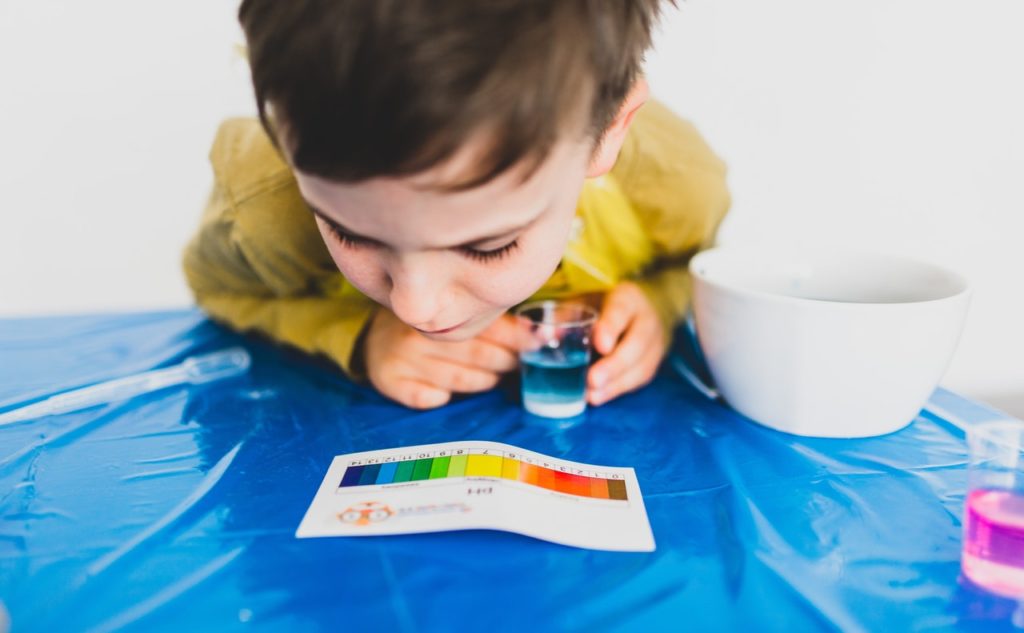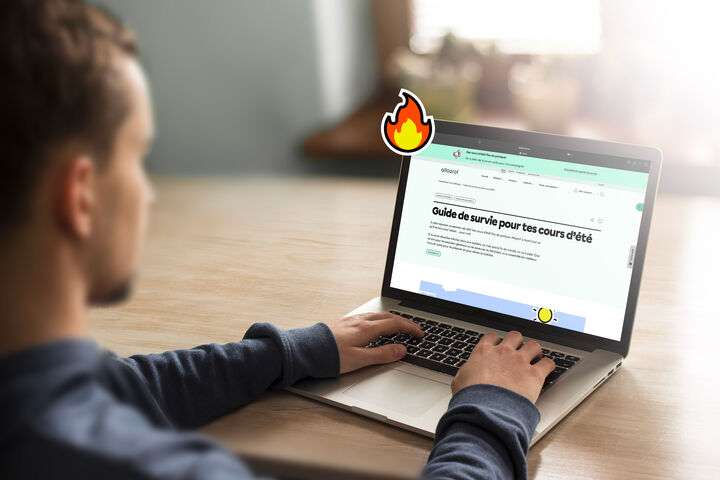Par Geneviève Allaire-Duquette, Université de Sherbrooke
Bien que le volet pratique des sciences et technologies pour générer des apprentissages et susciter la curiosité soit reconnu, celui-ci a été mis à mal avec la pandémie. Reproduire hors classe ou hors laboratoire les activités expérimentales est un défi. On se trouve à l’étroit, le matériel fait défaut, ou encore on manque d’encadrement pour assurer un déroulement sécuritaire. Que faire alors? Certains repères pourraient constituer un point de départ raisonnable pour permettre aux élèves de poursuivre leurs apprentissages pratiques même hors du laboratoire.
Pourquoi maintenir les activités pratiques de sciences et technologies en enseignement à distance?
Partout à travers le monde, les travaux pratiques sont considérés comme un élément essentiel de l’apprentissage des sciences et technologies, tout comme la discussion est une partie essentielle de l’apprentissage des langues.
Ce consensus se retrouve chez le personnel enseignant, les étudiants, les parents, les employeurs et les scientifiques professionnels qui constatent que les sciences et technologies expérimentales permettent notamment d’apprécier la démarche scientifique, d’améliorer la compréhension des concepts théoriques, de motiver ou d’engager les élèves et de développer des habiletés qui débordent du cadre scientifique, dont la communication et la persévérance.
Étonnamment, malgré le pouvoir croissant de la technologie numérique pour simuler le monde réel, la science pratique est toujours aussi appréciée (The Gatsby Charitable Foundation, 2017).
Récemment, la pandémie a grandement augmenté le nombre d’heures que les élèves passent à apprendre en mode virtuel. Cette augmentation risque d’entraîner des répercussions sur la santé mentale et d’affaiblir le sentiment d’appartenance à l’école pour les enfants (Simpson et Knox, 2020). Assurer la continuité pédagogique des activités pratiques en sciences et technologies pourrait contribuer à amoindrir ces impacts néfastes.
Une étude pilote a justement révélé que les élèves qui réalisent en famille des expérimentations scientifiques et technologiques à la maison développent un meilleur esprit communautaire, communiquent mieux et se montrent plus enclins à des attitudes de partage (Simpson et Knox, 2020). Plusieurs élèves poursuivent même les activités une fois l’objectif annoncé atteint, utilisant par exemple des matériaux du bac à recyclage pour concevoir des objets techniques de leur propre gré.
Par où commencer pour faire des sciences et technologies « à emporter »?
Il peut sembler difficile de piloter des activités pratiques hors de l’école ou du laboratoire. Pour nous aider, l’Education Endowment Foundation (2020) propose quelques repères pour mieux se lancer dans l’aventure des sciences et technologies expérimentales « à emporter ». Voici un résumé et une explication des repères les plus importants :
1. Avant tout, penser à la sécurité.
Lors de la planification d’activités expérimentales scientifiques et technologiques « à emporter », la principale considération devrait être la sécurité des élèves. Le matériel devra être simplifié pour, par exemple, minimiser l’utilisation d’objets contondants ou la présence de flammes en réalisant le prédécoupage des échantillons ou le chauffage sans flamme, si possible. En contexte de pandémie, il convient en plus de penser à réduire ou même éviter le partage de matériel. Si le matériel est partagé, il devra être désinfecté, même après sa dernière utilisation.
2. Travailler en « kits ».
Il peut être judicieux de prévoir des kits pédagogiques à distribuer aux élèves en rotation si la quantité de matériel est limitée. Par exemple, si on expérimente la fonte, chaque élève peut travailler à partir d’un morceau de chocolat ou d’un glaçon placé dans un sac de plastique. Ou encore, pour travailler le magnétisme, on peut placer les objets derrière un Plexiglas afin d’éviter leur manipulation. On peut aussi mettre nos collègues techniciens en travaux pratiques ou les élèves à contribution et assurer le nettoyage du matériel au retour des kits.
3. Attribuer des rôles pour la prise de mesures.
Pour faciliter l’implication des membres de la bulle familiale, on peut attribuer des rôles précis pour la prise de mesures. Par exemple, dans une expérimentation sur la dissolution, un élève peut collecter le filtrat, un parent être responsable de manipuler le thermomètre et un grand-parent prendre en charge le brassage.
4. Filmer des démonstrations.
Comme les parents ont possiblement peu d’expérience dans l’encadrement d’activités pratiques en sciences et technologies, il peut être judicieux de rendre disponible en ligne une démonstration qu’on aura filmée avec un téléphone. Ce support facilite le montage et la réalisation de l’expérimentation. De plus, la démonstration peut proposer des questions à discuter en famille, par exemple : « Comment l’expérimentation contrôlait-elle les variables? », « Les résultats étaient-ils surprenants? Pourquoi? » ou encore « La variable à l’étude était-elle appropriée? Pourquoi? ».
5. Expérimenter à l’extérieur.
Mener des activités expérimentales à l’extérieur peut éviter le besoin de préparer, partager et assainir du matériel. Par exemple, une expérience sur la friction peut être conduite à l’extérieur si on demande aux élèves d’utiliser leur coffre à crayon ou leurs propres souliers comme montage expérimental. Il est également possible de demander aux élèves de réaliser des enquêtes sur les différents types de sol en leur demandant de dessiner leurs observations.
6. Faire appel à des simulations.
Enfin, en dernier recours, si le matériel est trop dangereux à manipuler ou n’est pas disponible en quantité suffisante, on peut avoir recours à des simulations en ligne comme la planche à circuits (PBS LearningMedia, 2021a) ou la fusion et l’ébullition (PBS LearningMedia, 2021b).
Les sciences et technologies expérimentales ont sans conteste souffert de la crise sanitaire, car devoir composer avec un environnement sans laboratoire, sans classe ou du moins avec un accès limité à du matériel scientifique peut miner la créativité et offrir moins de flexibilité aux enseignants (Education Endowment Foundation, 2020). Les élèves peuvent aussi avoir l’impression qu’ils apprendront « moins » ou « moins bien » que s’ils avaient accès à un laboratoire plus traditionnel.
Cependant, en prenant le temps de réfléchir et d’explorer de nouvelles approches, il demeure possible d’offrir aux élèves les activités expérimentales les plus efficaces, engageantes et fréquentes possibles.
Références
- Conner, C. D. (2011). Histoire populaire des sciences. Montreuil : L’Échappée. 560 p.
- Education Endowment Foundation. (2020). Guest Blog: 6 approaches schools can use to provide practical science opportunities in this ‘new normal’.
- The Gatsby Charitable Foundation. (2017). Good Practical Science. Londres, Royaume-Uni.
- Martin, O. (2005). Une étude des institutions de la recherche en histoire, philosophie et sociologie des sciences. La revue pour l’histoire du CNRS [en ligne], 13.
- PBS LearningMedia. (2021a). DC Circuit Builder: Grade 6-12.
- PBS LearningMedia. (2021b). Melting and Boiling Simulation: Grade 6-12.
Simpson, A. M. et Knox, P. N. (2020, 13 octobre). Getting kids – and their caregivers – to practice STEM at home. The Conversation.
Ce texte a d’abord été publié dans le magazine Spectre de novembre 2021, le magazine de l’Association pour l’enseignement de la science et de la technologie au Québec.






